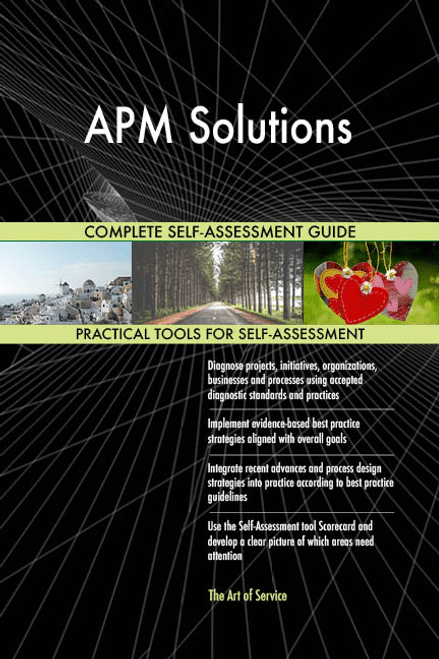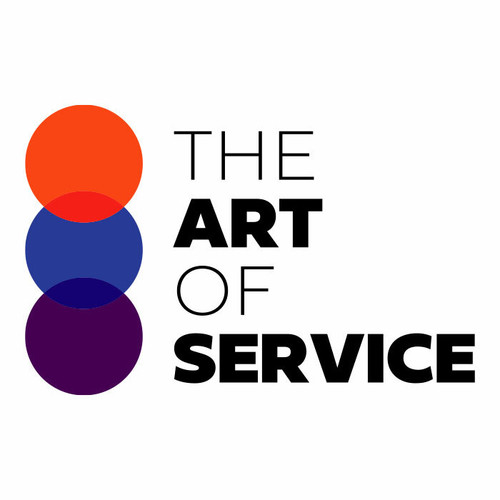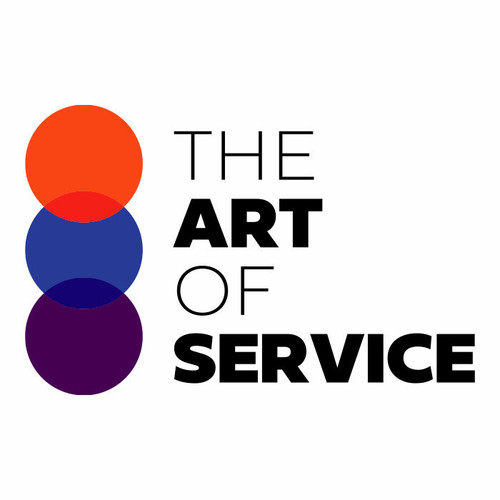Be accountable for monitoring application performance during performance tests or production usage through the use of APM and other monitoring tools to isolate the fault domain, dive deep into application code, and identify root cause of performance issues.
More Uses of the APM Toolkit:
- Standardize: communication and training for cmdb and APM policies, Processes And Procedures.
- Drive: APM performance systems analyst fully remote job.
- Engage with Engineering teams early in the development lifecycle to integrate APM solutions for distributed tracing and end to end visibility.
- Be accountable for defining the strategy for enabling performance diagnostics and monitoring through the use of an Application Performance Management (APM) tool, other monitoring tools, and diagnostic techniques.
- Steer: development of APM security enhancements.
- Steer: IT Process Management, cmdb/APM governance.
- Evaluate: APM and distributed tracing.
- Warrant that your organization performs onboarding of applications across Deluxe to enable monitoring and alerting with best practices and standard APM tools.
- Develop: Application Portfolio Management / APM.
- Liaise with sbu managers to articulate and best practices in Application Portfolio Management (APM) and Systems Analysis.
- Manage: act as the lead Process Management for cmdb/APM.
Save time, empower your teams and effectively upgrade your processes with access to this practical APM Toolkit and guide. Address common challenges with best-practice templates, step-by-step Work Plans and maturity diagnostics for any APM related project.
Download the Toolkit and in Three Steps you will be guided from idea to implementation results.
The Toolkit contains the following practical and powerful enablers with new and updated APM specific requirements:
STEP 1: Get your bearings
Start with...
- The latest quick edition of the APM Self Assessment book in PDF containing 49 requirements to perform a quickscan, get an overview and share with stakeholders.
Organized in a Data Driven improvement cycle RDMAICS (Recognize, Define, Measure, Analyze, Improve, Control and Sustain), check the…
- Example pre-filled Self-Assessment Excel Dashboard to get familiar with results generation
Then find your goals...
STEP 2: Set concrete goals, tasks, dates and numbers you can track
Featuring 914 new and updated case-based questions, organized into seven core areas of Process Design, this Self-Assessment will help you identify areas in which APM improvements can be made.
Examples; 10 of the 914 standard requirements:
- Do you perform a regular assessment of the overall key pieces of the Application Portfolio and how they fit with your organizations strategy. Can the portfolio support today and tomorrows business models?
- Do you have an Information Sharing Agreement with another body that involves the collection, use, disclosure or storage or personal information? What is its impact on your Application Portfolio?
- Is there a comprehensive business technology strategy that addresses alignment, infrastructure, applications, delivery, communications, security, support, governance, and funding?
- Are the migration costs associated with a migration to the cloud included in a new system/application investment, the legacy investment, or in a separate migration investment?
- Are you contracting out a portion of you program, initiative, system development that requires the collection, use, disclosure or storage of personal information?
- What data is to be converted and moved to the cloud ÛÒ what is the nature and usage of the data, by its current Application / Function system and its environment?
- How does your organization determine the extent of underused, unused, low business value, and/or low technology value applications in its Application Portfolio?
- Are you developing custom applications to do routine administrative tasks, such as HR or ERP, when commercial off-the-shelf applications might be available?
- How does your organization determine the cost to maintain an application in its Application Portfolio versus what it costs to retire or decommission it?
- How does your organization determine the extent of applications in its Application Portfolio that are still active past their target retirement dates?
Complete the self assessment, on your own or with a team in a workshop setting. Use the workbook together with the self assessment requirements spreadsheet:
- The workbook is the latest in-depth complete edition of the APM book in PDF containing 914 requirements, which criteria correspond to the criteria in...
Your APM self-assessment dashboard which gives you your dynamically prioritized projects-ready tool and shows your organization exactly what to do next:
- The Self-Assessment Excel Dashboard; with the APM Self-Assessment and Scorecard you will develop a clear picture of which APM areas need attention, which requirements you should focus on and who will be responsible for them:
- Shows your organization instant insight in areas for improvement: Auto generates reports, radar chart for maturity assessment, insights per process and participant and bespoke, ready to use, RACI Matrix
- Gives you a professional Dashboard to guide and perform a thorough APM Self-Assessment
- Is secure: Ensures offline Data Protection of your Self-Assessment results
- Dynamically prioritized projects-ready RACI Matrix shows your organization exactly what to do next:
STEP 3: Implement, Track, follow up and revise strategy
The outcomes of STEP 2, the self assessment, are the inputs for STEP 3; Start and manage APM projects with the 62 implementation resources:
- 62 step-by-step APM Project Management Form Templates covering over 1500 APM project requirements and success criteria:
Examples; 10 of the check box criteria:
- Procurement Audit: Are receiving reports on file for all claims for equipment, supplies and materials in the paid claims file?
- Requirements Documentation: Does the system provide the functions which best support the customers needs?
- Change Request: How can you ensure that changes have been made properly?
- WBS Dictionary: Are overhead cost budgets (or APM projections) established on a facility-wide basis at least annually for the life of the contract?
- Stakeholder Management Plan: Is an industry recognized mechanized support tool(s) being used for APM project scheduling & tracking?
- Schedule Management Plan: Do APM Project Teams & team members report on status / activities / progress?
- Human Resource Management Plan: Are vendor invoices audited for accuracy before payment?
- Source Selection Criteria: What is the basis of an estimate and what assumptions were made?
- Formal Acceptance: Was the APM project work done on time, within budget, and according to specification?
- Responsibility Assignment Matrix: Is budgeted cost for work performed calculated in a manner consistent with the way work is planned?
Step-by-step and complete APM Project Management Forms and Templates including check box criteria and templates.
1.0 Initiating Process Group:
- 1.1 APM project Charter
- 1.2 Stakeholder Register
- 1.3 Stakeholder Analysis Matrix
2.0 Planning Process Group:
- 2.1 APM Project Management Plan
- 2.2 Scope Management Plan
- 2.3 Requirements Management Plan
- 2.4 Requirements Documentation
- 2.5 Requirements Traceability Matrix
- 2.6 APM project Scope Statement
- 2.7 Assumption and Constraint Log
- 2.8 Work Breakdown Structure
- 2.9 WBS Dictionary
- 2.10 Schedule Management Plan
- 2.11 Activity List
- 2.12 Activity Attributes
- 2.13 Milestone List
- 2.14 Network Diagram
- 2.15 Activity Resource Requirements
- 2.16 Resource Breakdown Structure
- 2.17 Activity Duration Estimates
- 2.18 Duration Estimating Worksheet
- 2.19 APM project Schedule
- 2.20 Cost Management Plan
- 2.21 Activity Cost Estimates
- 2.22 Cost Estimating Worksheet
- 2.23 Cost Baseline
- 2.24 Quality Management Plan
- 2.25 Quality Metrics
- 2.26 Process Improvement Plan
- 2.27 Responsibility Assignment Matrix
- 2.28 Roles and Responsibilities
- 2.29 Human Resource Management Plan
- 2.30 Communications Management Plan
- 2.31 Risk Management Plan
- 2.32 Risk Register
- 2.33 Probability and Impact Assessment
- 2.34 Probability and Impact Matrix
- 2.35 Risk Data Sheet
- 2.36 Procurement Management Plan
- 2.37 Source Selection Criteria
- 2.38 Stakeholder Management Plan
- 2.39 Change Management Plan
3.0 Executing Process Group:
- 3.1 Team Member Status Report
- 3.2 Change Request
- 3.3 Change Log
- 3.4 Decision Log
- 3.5 Quality Audit
- 3.6 Team Directory
- 3.7 Team Operating Agreement
- 3.8 Team Performance Assessment
- 3.9 Team Member Performance Assessment
- 3.10 Issue Log
4.0 Monitoring and Controlling Process Group:
- 4.1 APM project Performance Report
- 4.2 Variance Analysis
- 4.3 Earned Value Status
- 4.4 Risk Audit
- 4.5 Contractor Status Report
- 4.6 Formal Acceptance
5.0 Closing Process Group:
- 5.1 Procurement Audit
- 5.2 Contract Close-Out
- 5.3 APM project or Phase Close-Out
- 5.4 Lessons Learned
Results
With this Three Step process you will have all the tools you need for any APM project with this in-depth APM Toolkit.
In using the Toolkit you will be better able to:
- Diagnose APM projects, initiatives, organizations, businesses and processes using accepted diagnostic standards and practices
- Implement evidence-based best practice strategies aligned with overall goals
- Integrate recent advances in APM and put Process Design strategies into practice according to best practice guidelines
Defining, designing, creating, and implementing a process to solve a business challenge or meet a business objective is the most valuable role; In EVERY company, organization and department.
Unless you are talking a one-time, single-use project within a business, there should be a process. Whether that process is managed and implemented by humans, AI, or a combination of the two, it needs to be designed by someone with a complex enough perspective to ask the right questions. Someone capable of asking the right questions and step back and say, 'What are we really trying to accomplish here? And is there a different way to look at it?'
This Toolkit empowers people to do just that - whether their title is entrepreneur, manager, consultant, (Vice-)President, CxO etc... - they are the people who rule the future. They are the person who asks the right questions to make APM investments work better.
This APM All-Inclusive Toolkit enables You to be that person.
Includes lifetime updates
Every self assessment comes with Lifetime Updates and Lifetime Free Updated Books. Lifetime Updates is an industry-first feature which allows you to receive verified self assessment updates, ensuring you always have the most accurate information at your fingertips.






